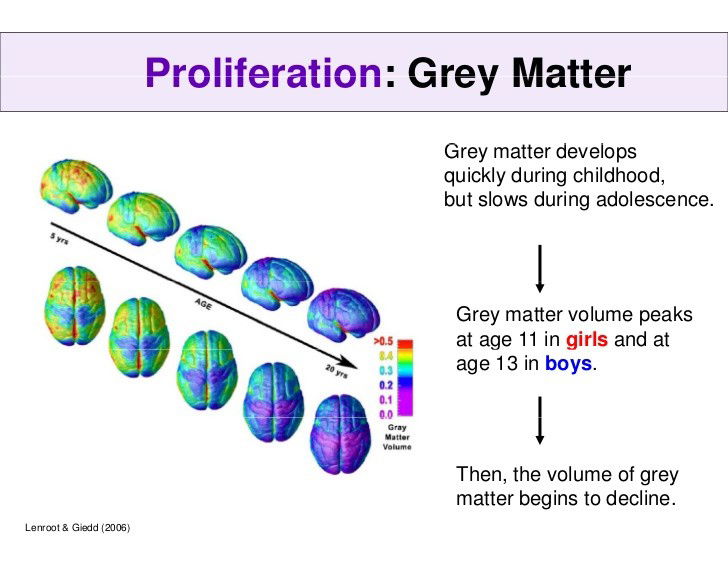Health
Grey matter density increases during adolescence: Study

New York, May 26: While grey matter volume generally decrease with age, its density actually increases during adolescence, new research has found.
Grey matter is found in regions of the brain responsible for muscle control, sensory perception such as seeing and hearing, memory, emotions, speech, decision making, and self-control.
For years, the common narrative in human developmental neuroimaging has been that grey matter in the brain declines in adolescence, a finding derived mainly from studies of grey matter volume and cortical thickness --the thickness of the outer layers of brain that contain grey matter.
Grey matter density, a measure often assumed to be highly related to volume, has not been systematically investigated in development.
Th new study published in the Journal of Neuroscience revealed that while volume indeed decreases from childhood to young adulthood, grey matter density actually increases.
"We now have a richer, fuller concept of what happens during brain development," said Ruben Gur, Professor at Perelman School of Medicine at the University of Pennsylvania, US.
Since it has been well-established that larger brain volume is associated with better cognitive performance, it was puzzling that cognitive performance shows a dramatic improvement from childhood to young adulthood at the same time that brain volume and cortical thickness decline.
The new findings can help solve this puzzle. The study also showed that while females have lower brain volume, proportionate to their smaller size, they have higher grey matter density than males, which could explain why their cognitive performance is comparable despite having lower brain volume.
Thus, while adolescents lose brain volume, and females have lower brain volume than males, this is compensated for by increased density of grey matter.
In the study, the researchers evaluated 1,189 youth between the ages of 8 and 23 who completed magnetic resonance imaging as part of the Philadelphia Neurodevelopmental Cohort, a community-based study of brain development.
The study includes rich neuroimaging and cognitive data, to look at age-related effects on multiple measures of regional grey matter, including gray matter volume, gray matter density, and cortical thickness.
Neuroimaging allowed the researchers to derive several measures of human brain structure in a noninvasive way.
Observing such measures during development allowed the researchers to study the brain at different ages to characterise how a child's brain differs from an adult's.
The study may better explain the extent and intensity of changes in mental life and behavior that occur during the transition from childhood to young adulthood.
"If we are puzzled by the behavior of adolescents, it may help to know that they need to adjust to a brain that is changing in its size and composition at the same time that demands on performance and acceptable behavior keep scaling up," Gur added.



































